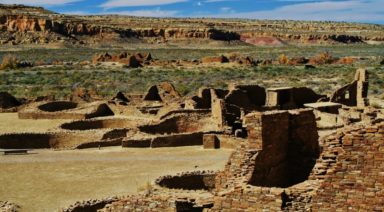The Tall, Red-Headed Demi-Gods From Orion

Humans through millennia have gazed into the night’s sky at Orion’s three outstanding stars. Among them was the Greek poet Homer who made mention of the constellation in the Odyssey;. the writers of the Old Testament referenced Orion in two of its books, Job and Amos; and the Egyptian mathematician Ptolemy, who cataloged Orion in his astronomical studies.
Named after the Greek hunter, the constellation of Orion is one of the most famous of all constellations, with nearly every ancient civilization forming an affinity to it from the Middle East to Africa and across the Americas. It is even said that the ancient Egyptians and Mayans used the three stars of Orion’s belt as a guide for positioning the pyramids, to mimic what they had seen in the heavens above.
And modern-day researchers, including Freddy Silva, are putting together the pieces embedded in the myths of the ancient world, asserting that the “gods” descended from the belt of Orion, came to Earth, and became our ancestors.
Many have questioned the origins of humans on Earth, as there seems to be no definitive starting point, but several researchers, such as Graham Hancock, Freddy Silva, and others, have concluded that mainstream science is way off the mark.
Silva cites several interesting sites and cultures that point to extraterrestrial origins of the human race, and his evidence is worldwide. The gods, Silva suggests, may have been more literal than mythical. A god, he says, “was considered any being who had control over the laws of nature… a god is a force of nature.” The gods who descended from Orion and came to planet Earth were human-like, but not quite human.
Much of this mystery has to do with the great flood occurring around 12,000 years ago that is written about in the oldest literature of myriad cultures. Following the flood, the gods seem to have moved on from this world, leaving their children behind to procreate with human women. The offspring were known as Nephila, translating to “the children of Orion.”
In an article, Silva writes that Robert Bauval, Belgian author and lecturer known for his Orion Correlation Theory regarding the Giza pyramid complex, and director-writer Adrian Gilbert, have shown how the foundation plan of the three main Giza pyramids mirror Orion’s belt as it would have been aligned around 10,500 B.C.E.
This, as well as the geographical layout of Gobekli Tepe and the Mayan pyramids, maybe a clue to the origins of our modern-day human species. Why else, of all constellations, were early peoples so concerned with Orion (of all the billions of stars in the sky), other than to pay homage to the giant gods?
In “Orion, Home of the Gods,” Silva tells Regina Meredith that the beings from Orion were red-haired giants, and their images can still be found on cave and rock wall drawings surviving from antiquity, including those painted on the walls of Horseshoe Canyon, Utah.
And in the 17th century, when European explorers landed in the Pacific islands, from Easter Island to New Zealand, they were amazed at how many blond-haired natives inhabited Polynesia. Silva notes that 60 percent of the Tahitian islanders were blond and blue-eyed.
Freddy Silva is a treasure trove of information about the cultures linked to the constellation of Orion, as his books reveal. His latest interview leaves one wondering whether our earliest beginnings were anything but what modern-day science has concluded — and perhaps we are, in large part, descendants from a race of giants who were literally out of this world.
Doggerland; Sunken Landmass Between UK & Europe May Be Atlantis

A thriving ancient culture that was wiped out by rising waters and a great tsunami—could the real Atlantis have been located between Britain and Europe?
Along the coast of the Netherlands, the ocean has been giving up its secrets. About 10,000 years ago, what is now water, was a landmass filled with flora, fresh game, and from what we can tell, a flourishing civilization. But at the end of the last ice age, glaciers melted, sea levels rose and what remained of this area is believed to have been knocked out by a tsunami.
Dubbed “Doggerland” after a sandbank off the coast of England, archeologists first learned of the potential of the Stone Age civilization there in 1931, when a fishing boat pulled up a barbed antler spearhead. There has been interest in Doggerland since then, but only in the last decade or so has there been intense study using high-tech seafloor mapping equipment, and low-tech citizen archeologists who bring their finds to the National Museum of Antiquities in Leiden, Holland.
Fishermen have found the remains of mammoths, hyenas, lions, as well as pre-historic tools, weapons, and skull fragments. Could this be the Atlantis that Plato wrote about? Some experts disagree…




































